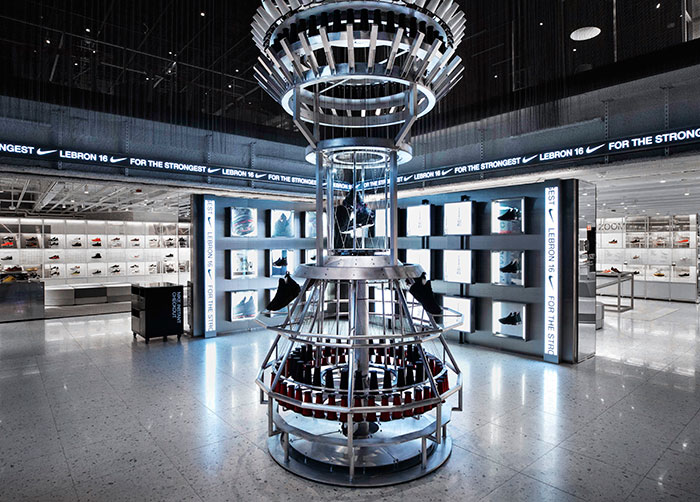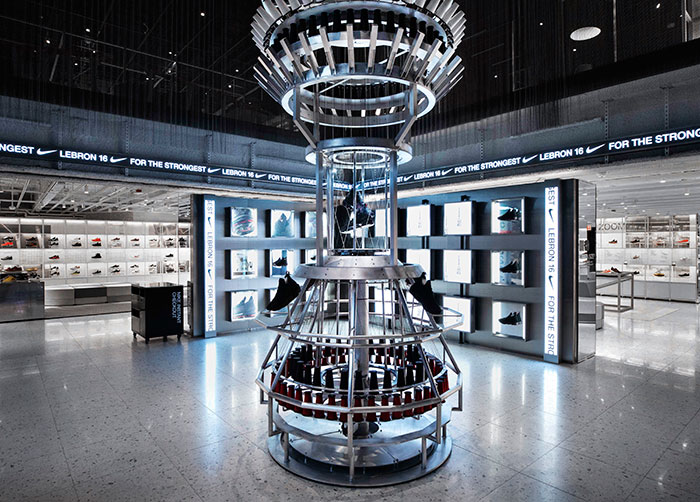
While store closings are still in the news, these stories are juxtaposed with reports of brands opening spectacular, sprawling flagships with amenities and services that make them more than a shopping destination.
Nike’s new flagship store in New York City, dubbed “House of Innovation 000,” opened last November and is a perfect example of interactive, personalized retail. Its impressive design represents what some are calling the “store of the future.”
But is a six-story, 68,000-sq.-ft. technology-filled store, like the Nike flagship, what consumers really want? Sure, it’s sexy and it’s a great tourist destination but for retailers that are not Nike, is this the prototype to emulate?
Not necessarily, and here’s why.
Let’s say a retailer isn’t a Nike, Neiman Marcus or Barneys, companies that are able to invest in massive new stores incorporating entertainment, dining, and retail under one roof. At the same time, however, the retailer realizes the need to innovate or risk losing market share. The question then becomes where should precious investment dollars and IT resources be allocated in order to make the biggest impact?
Customers hold the answer. iVend Retail’s Global Shopper Trends Report 2019, the fourth annual report based on a survey of 2,750 shoppers in 11 countries around the world, found that shoppers are focused on convenience and value when they decide where to spend their money and not necessarily whether they can virtually try on shoes.
New retail strategies don’t have to be super-futuristic or “sexy,” to be successful. But they should enable increased customer convenience.
In fact, the latest research from iVend Retail shows that the main things that shoppers want –quick checkouts, buy online, pick up in-store services and loyalty programs – are all attainable using basic omnichannel technologies that focus on convenience and that provide added value to the shopping experience.
Shoppers Want Tech that Adds Value
How are shoppers determining where to shop? What solutions will bring shoppers into the store, and keep them coming back?
Surprisingly, consumers aren’t looking for augmented reality (AR), voice-assisted shopping and interactive dressings rooms. Only 17.7% of survey respondents said those technologies added value, while a large majority (83%) said that quick and easy checkouts were important.
Shoppers prefer retailers that use technology to provide added value – and that is clear in the survey results when it comes to retail loyalty programs. According to the report, 91.9% of shoppers make purchases to earn loyalty rewards, and 35.3% base their purchasing decisions on loyalty rewards at least half of the time.
In addition, 93.9% of shoppers said that loyalty programs are a deciding factor when determining where to shop (an increase of 10% over prior year results).
Empowering Store Associates
The survey found that 84.2% of consumers look for a sales associate with mobile technology to assist them. Giving your sales associates some type of mobile device to provide better customer service on your store floor is a solid marketing and sales strategy.
The mobile technology needs to do more than just help with price checks, though. According to respondents, 47.3% of shoppers want associates to have a tablet or other mobile device to be able to look up inventory levels and product availability at other stores in the event they are out of stock, and 46.2% want associates to be able to order and ship a purchase directly to them.
Streamlining the Checkout
A poor checkout experience (long lines, payment processing delays, etc.) can keep customers away. Shoppers want to be able to get out of the store quickly once they have their merchandise, and 83% value an easy, quick checkout process. In addition, 44.4% of respondents said that a self-checkout system is an important factor in choosing to shop with a retailer.
Click and Collect
Shoppers have enthusiastically embraced the notion of omnichannel retail, particularly solutions that allow them to buy a product online and pick it up at the store (click and collect). Sixty-two percent more consumers reported picking up an online order in a physical store this year than the previous year.
As more retailers offer the option, more consumers are opting to bypass the wait and forego the shipping charges in favor of in-store pickup. 47.4% of respondents say they use click and collect to avoid shipping charges and 44.45 want to save time by not having to shop in the store.
Highly Sophisticated Technology Ranked Low
While advanced technologies like virtual reality get a lot of press and attention from top tier retailers, the research indicates that the majority of retailers will be much better served by investing in solutions like self-checkout, contactless payment, and scanning systems first. These solutions not only have a more easily quantifiable return on investment but also provide the efficiency and convenience that keeps shoppers coming back.
In fact, advanced technologies ranked relatively low in the list of solutions that would make consumers want to shop with a retailer. Voice assisted shopping was in the last place with only 10.7% of respondents desiring it, and virtual dressing rooms were listed by just 24% of respondents.
Conversely, the ability to scan a QR barcode in a store to receive product information or discounts was considered appealing by 44.6% of shoppers – a good example of a technology solution that also delivers on convenience and value.
The key message from this year’s survey is that retailers don’t need to load their stores with advanced virtual or augmented reality solutions -although that would be fun, and look really cool- to connect with customers.
Gaining the trust and loyalty of your shoppers is much simpler. They want great customer service from your store associates, to check out quickly, and they want to be rewarded for their loyalty.

